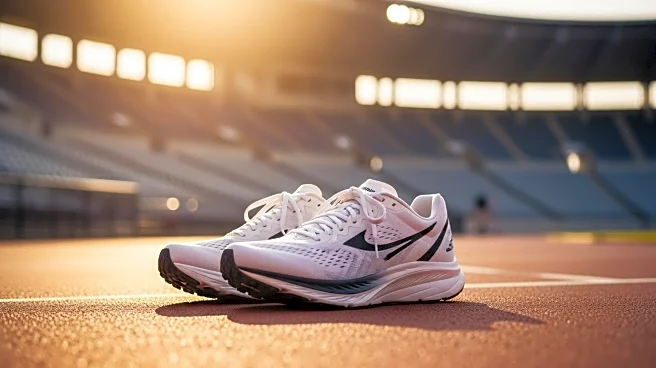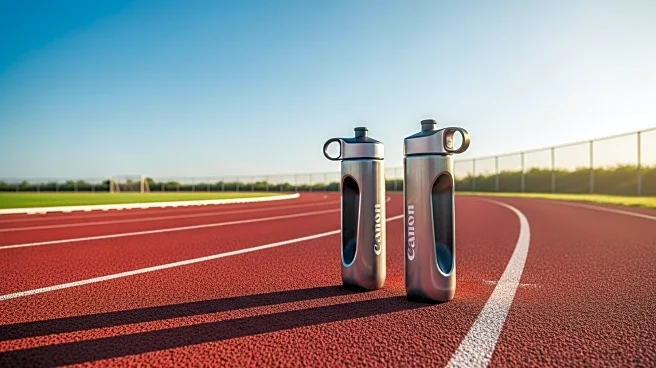What's Happening?
Jamie Burgess, a participant in the Robin Hood Half Marathon, collapsed due to heat exertion during the event. He was treated with a polar life pod bag, a pioneering method involving ice and water to rapidly cool core body temperatures. Burgess praised the East Midlands Immediate Care Scheme for their swift response, which he credits for his remarkable recovery. The marathon saw a record number of entrants, with over 14,000 participants. Dr. Tim Baker, a volunteer doctor at the event, highlighted the effectiveness of the new treatment in preventing severe outcomes from heatstroke. The polar life pod bag allowed for rapid cooling, significantly improving recovery times for affected individuals.
Why It's Important?
The introduction of the polar life pod bag represents a significant advancement in treating heat exertion during endurance events. Heatstroke can lead to multi-organ failure and be fatal if not addressed promptly. The ability to rapidly reduce core body temperature can prevent serious health consequences and improve recovery outcomes. This development underscores the importance of innovative medical interventions in sports and endurance events, potentially setting a new standard for on-site medical care. The success of this treatment may encourage its adoption in other events, enhancing safety protocols and participant well-being.
What's Next?
The success of the polar life pod bag at the Robin Hood Half Marathon may lead to its wider implementation in future endurance events. Organizers and medical teams could consider incorporating this treatment into standard protocols for managing heat exertion. Further research and trials may be conducted to refine the method and assess its effectiveness across different scenarios. The positive outcomes from this event may prompt discussions on improving medical preparedness and response strategies in sports events, potentially influencing policy changes.
Beyond the Headlines
The use of innovative treatments like the polar life pod bag highlights the intersection of technology and healthcare in sports. Ethical considerations may arise regarding access to such treatments, emphasizing the need for equitable distribution in various events. The cultural significance of marathons and endurance events as community-building activities may be enhanced by improved safety measures, encouraging broader participation. Long-term shifts in sports medicine may focus on preventive strategies and advanced treatments to address common health risks associated with endurance activities.










